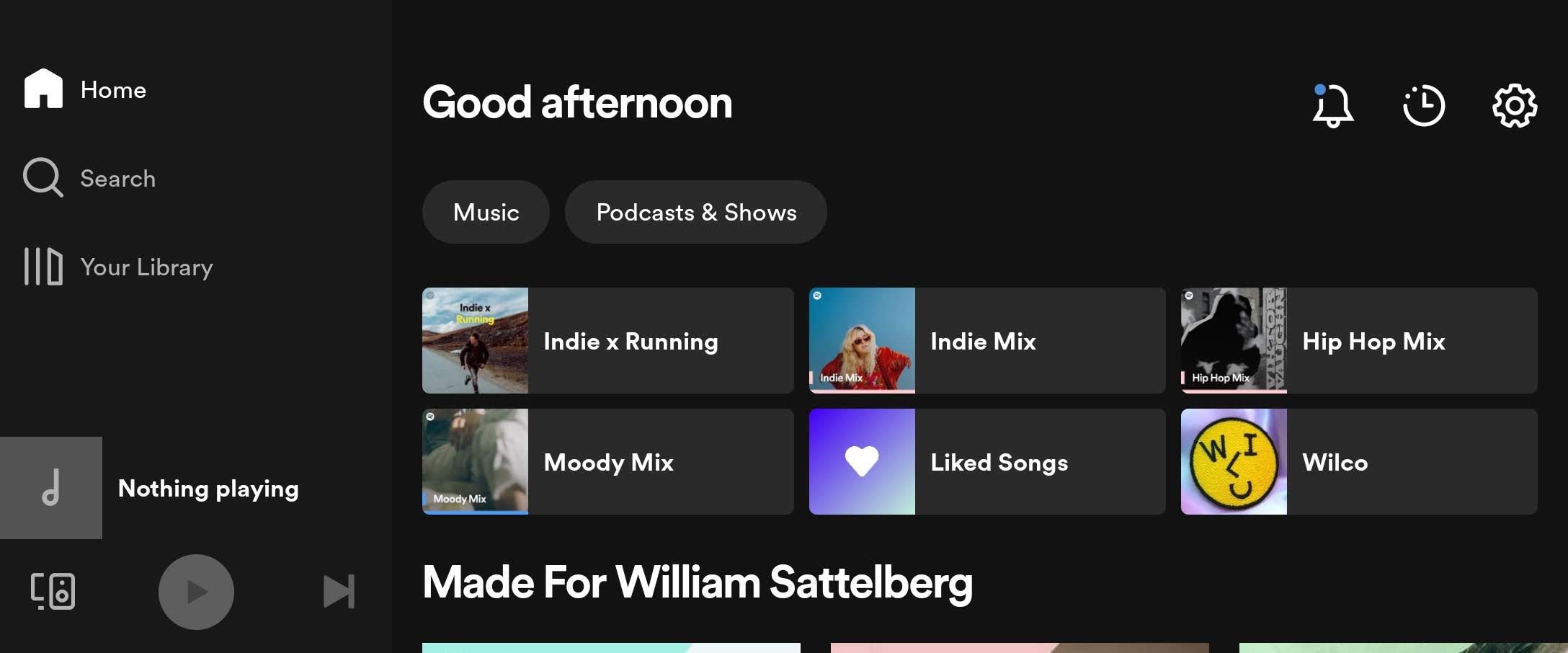How to use Flex Mode on the Samsung Galaxy Z Fold 4
Samsung makes all kinds of excellent smartphones at affordable prices, but nothing stands out like the Samsung Galaxy Z Fold 4. It’s one of the best Android phones you can buy today. Part phone, part tablet, it’s the productivity device of your dreams, but it’s not just a pretty screen.
Alongside some improvements from Google with Android 12L, Samsung has brought its own set of features and functionality to the table, and the best of them all is undoubtedly the Flex mode. This service turns your foldable device into a futuristic mini laptop, but you might not know where to start if you’re just starting out. Here’s everything you need to know about Flex Mode and other multitasking tricks.
As you’d expect, Flex mode is all about using your foldable display’s flexing display to your advantage. Not every application supports Flex mode, but those that do allow you to use the right side of the display panel as the main screen while turning the left side into a control panel. While not every workflow will fit Flex mode, it’s incredibly useful for those who want video control while watching a movie, music control while jamming in the office, or anyone who prefers mouse control over touchscreen control.
How to set up Flex mode on Samsung Galaxy Z Fold 4
To get started with Flex mode, open any application that supports this feature, then flex your Galaxy Z Fold 4’s display inward. When using a supported application, the app moves to the right (now top) pane while a row of controls appear along the left (now bottom) side. Place your phone on a desk or other flat surface, as it’s not quite as handy when you’re holding it.
If you’ve tried Flex mode before, you’ve probably noticed that it doesn’t work with every app. By default, Samsung has enabled this service for a handful of software, but that doesn’t mean you’re limited to what’s enabled by default.
To change how Flex mode works, dive into Settings on your Fold 4. When you are in the settings, search for Advanced featuresthen select laboratories from the options list. Flex mode panel can be found at the bottom of this menu.
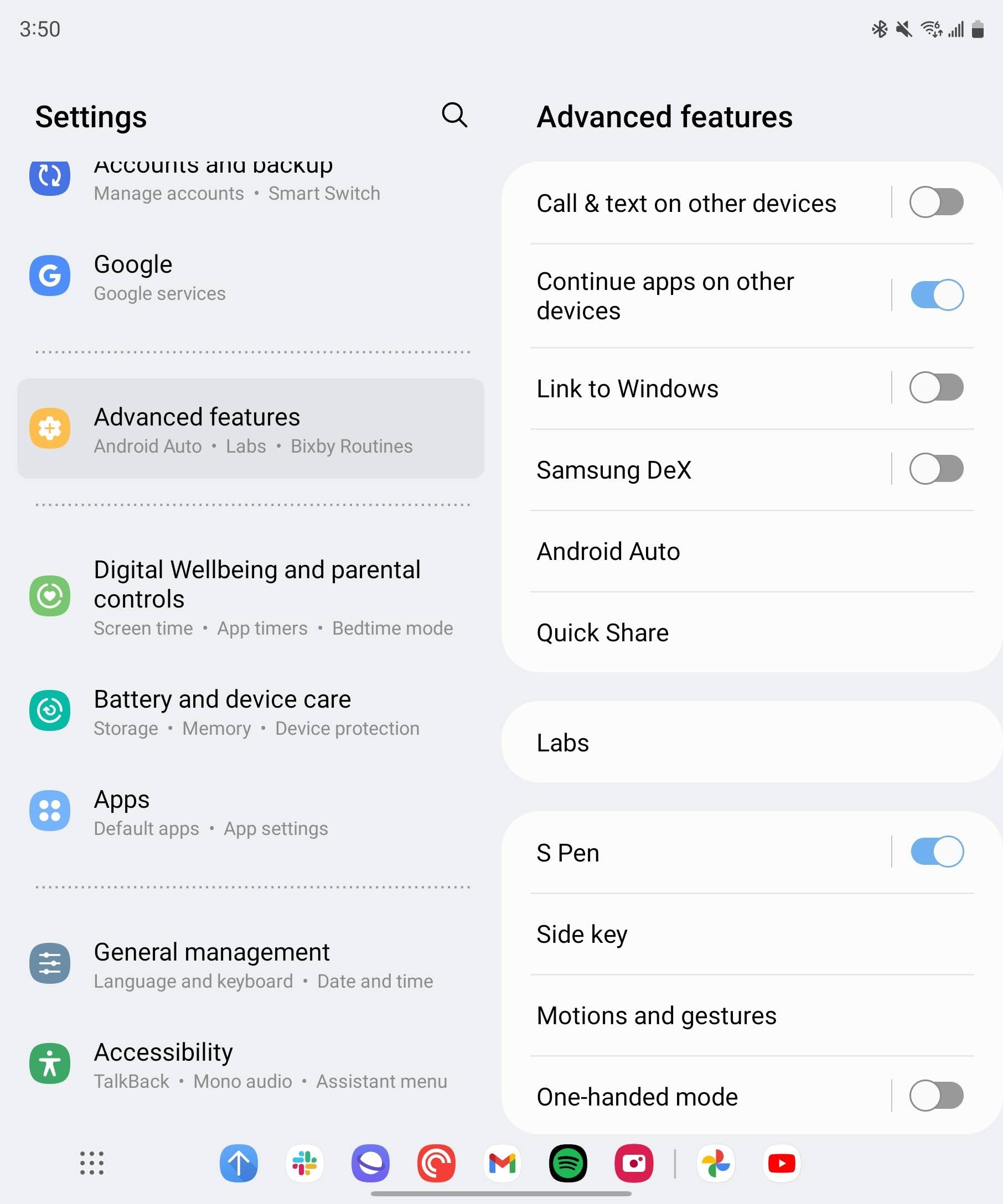
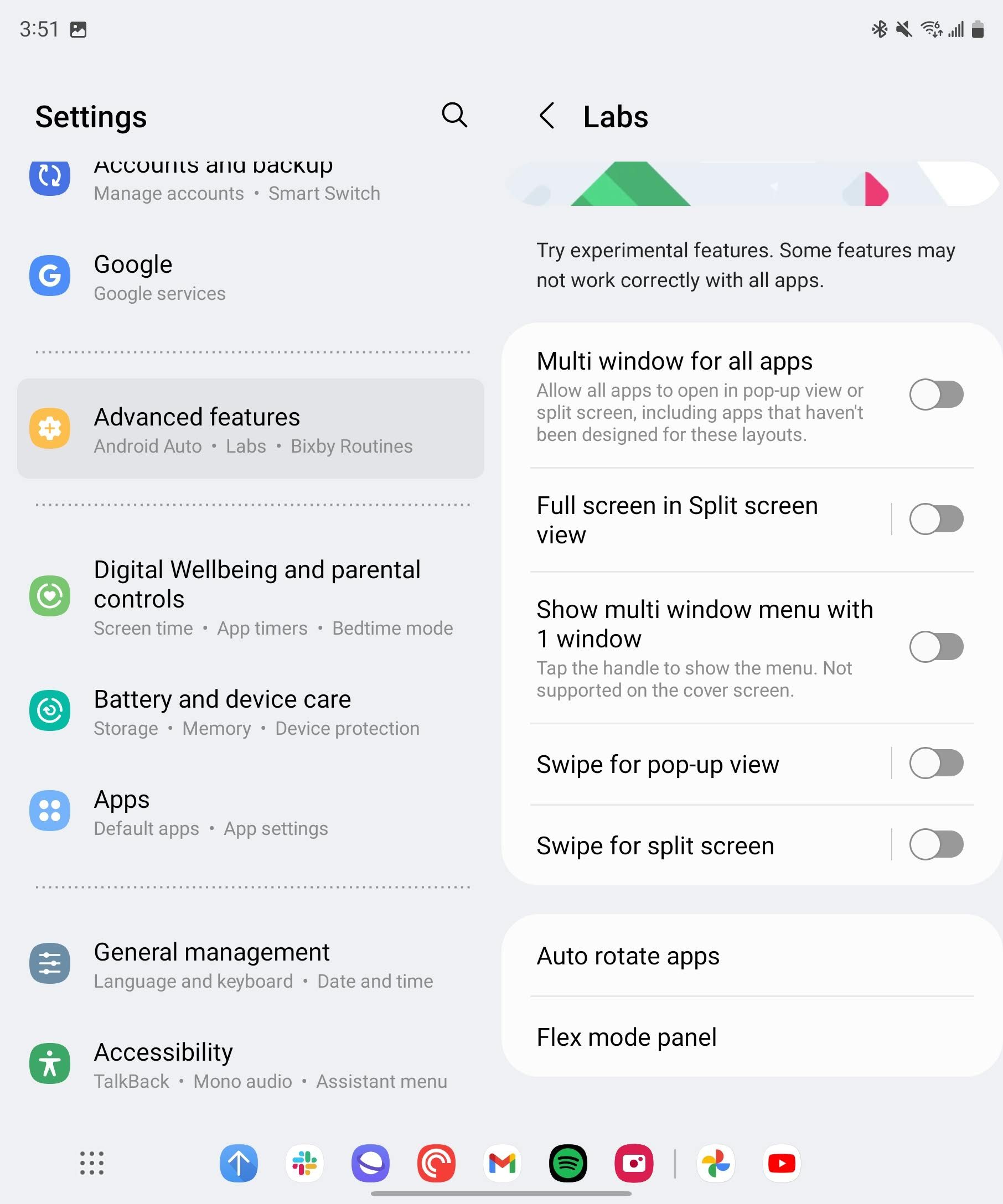
This is where you disable or enable Flex mode for the apps of your choice, including any preinstalled apps or apps downloaded from the Play Store. Not every app works well with Flex mode. Some services, including Instagram, do not support this at all. Others, including many Samsung apps, have their own custom layouts, so you can’t toggle the feature on or off.
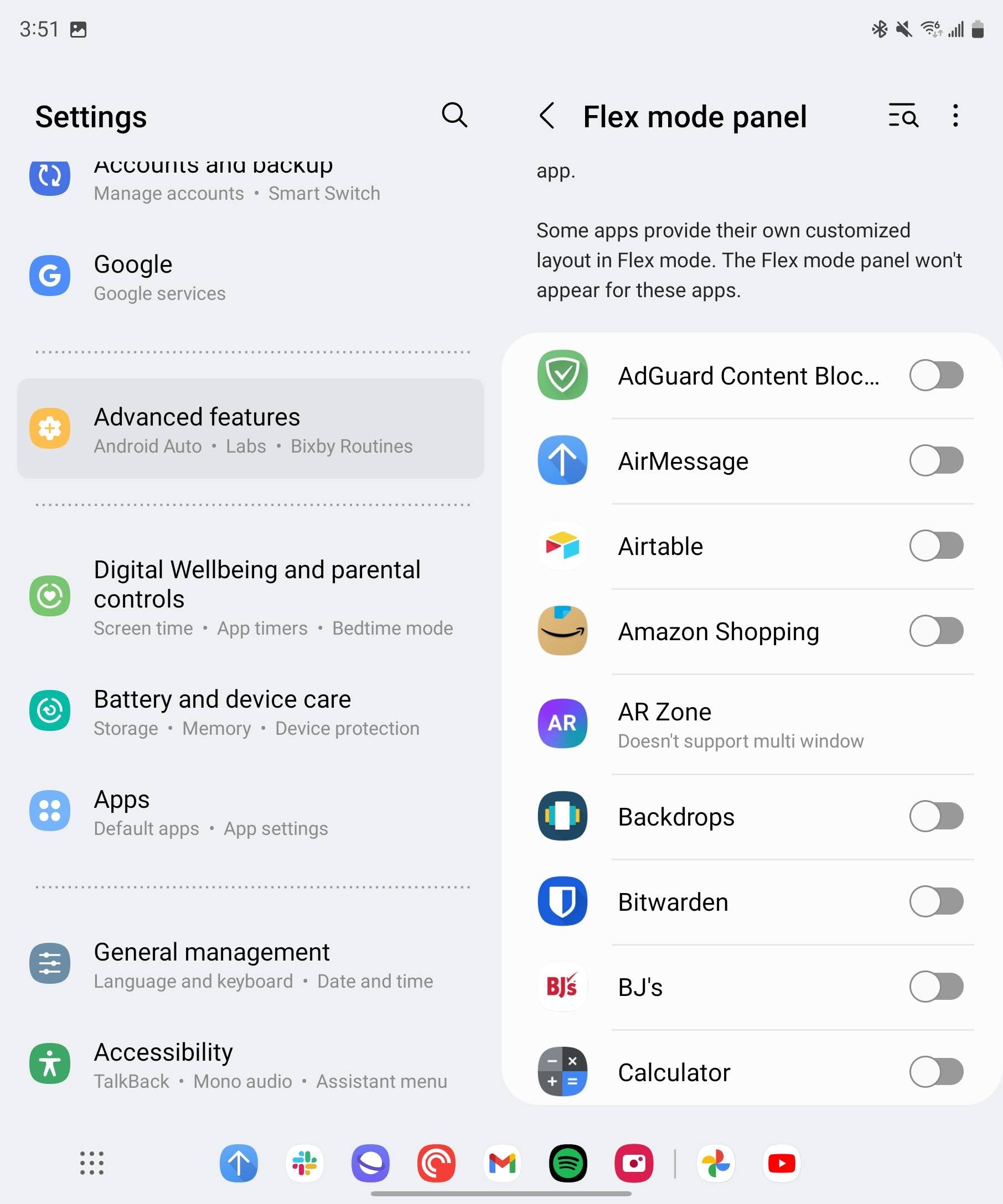
When you’re done setting up Flex mode, go back to the home screen and open an app. Turn the Fold 4 horizontally in your hands, then flex the screen to open the panel.
How to use all Flex mode features on Samsung Galaxy Z Fold 4
For most people, the main draw of Flex mode is the built-in touchpad. You can find the icon on the far right of the control panel in the lower part of the display. It turns the screen into a virtual trackpad, complete with a mouse icon at the top. Click, drag, scroll, double tap. Everything works as you expect. If you’re working on a high-profile project at work, this is a great way to get that laptop feel without having to carry around a full-size device.
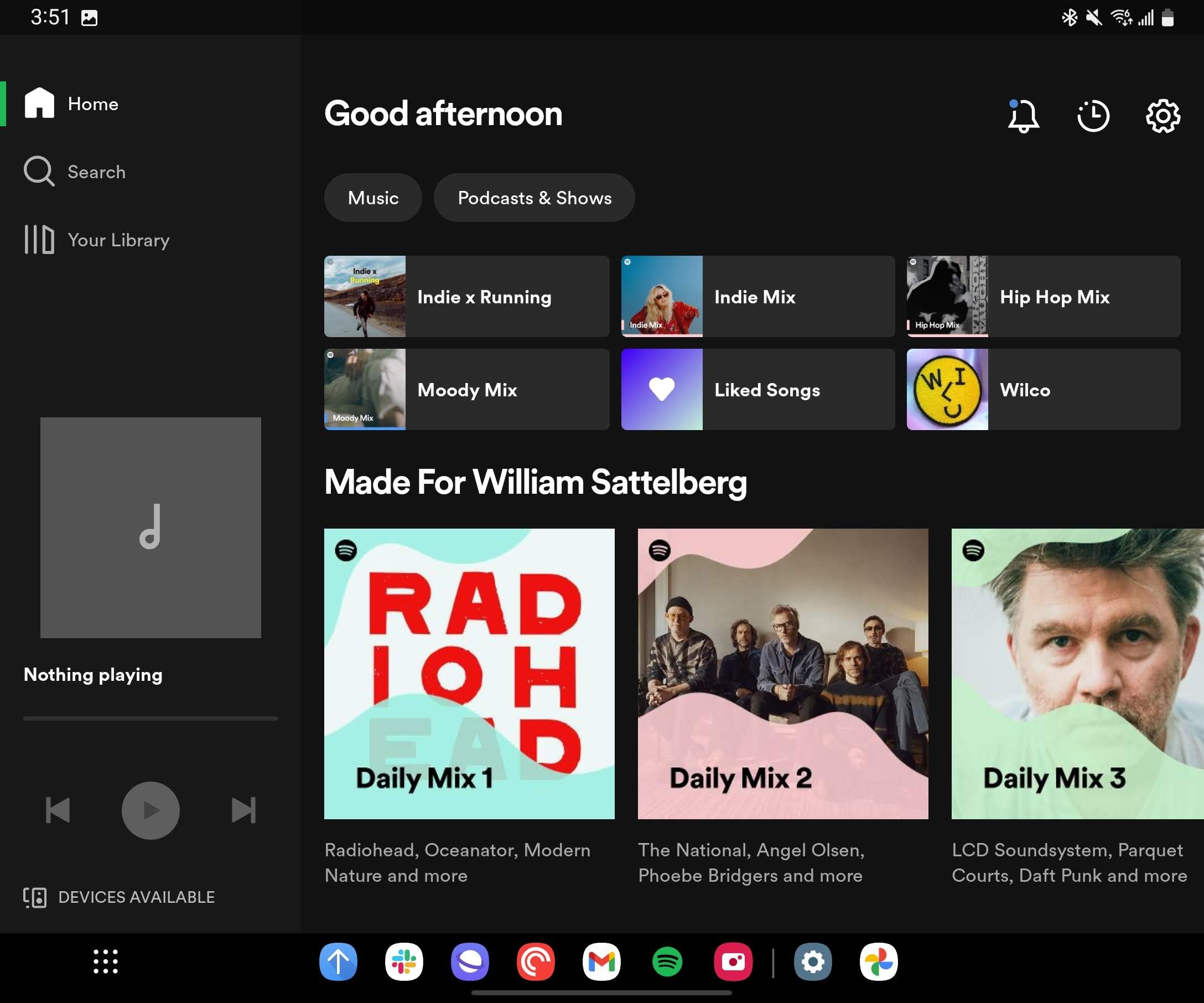
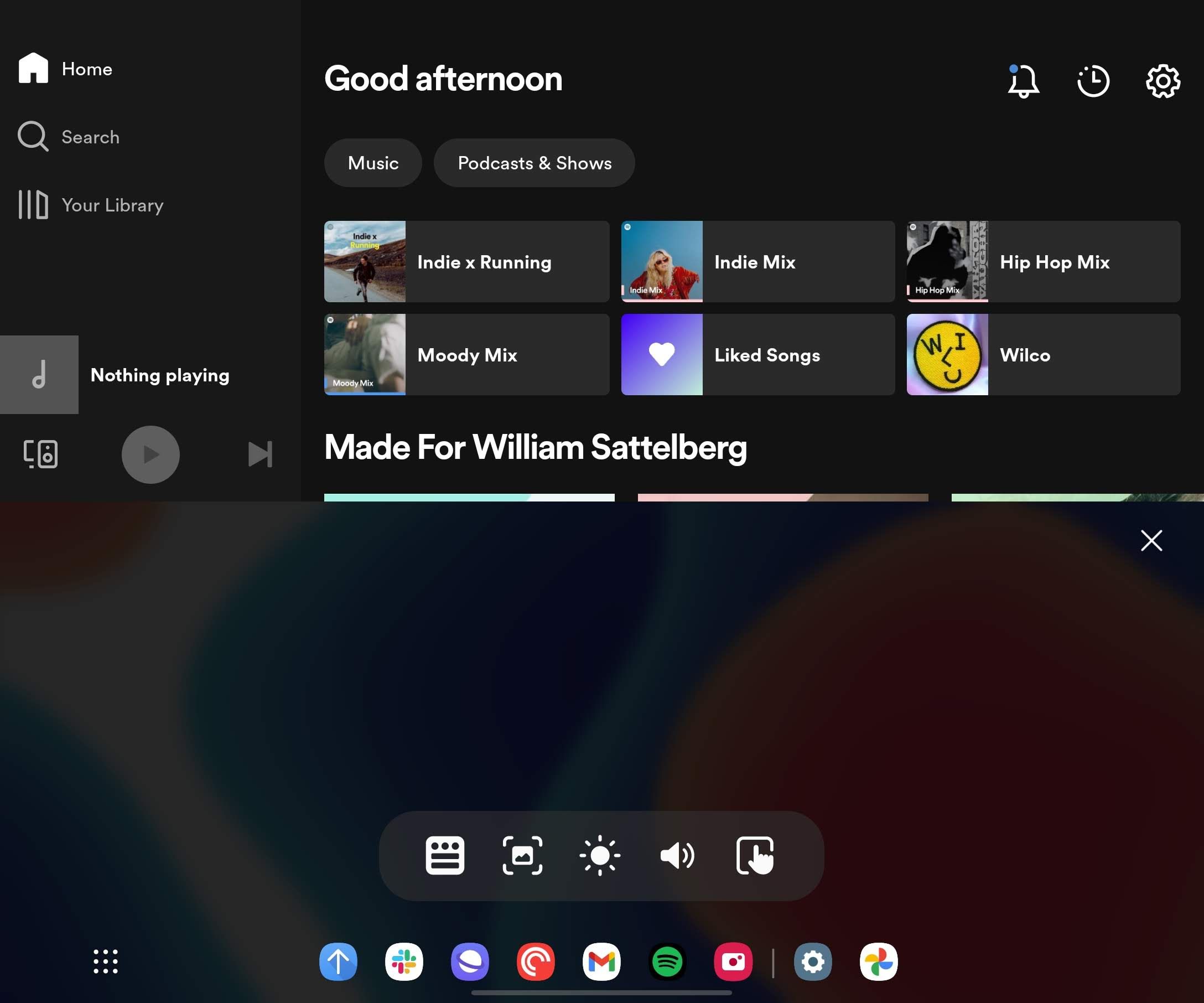
Still, the touchpad can be finicky in Flex mode. Since it takes up about half of the bottom part of the display, you have very little room to slide your finger up or down. This limited range also affects scrolling, as you can only move so far before you run out of space. You’re also stuck with the default mouse speed, which might feel slow. If you prefer a faster cursor, you won’t find it here. The touchpad is a nice gimmick, but you probably won’t rely on it very often.
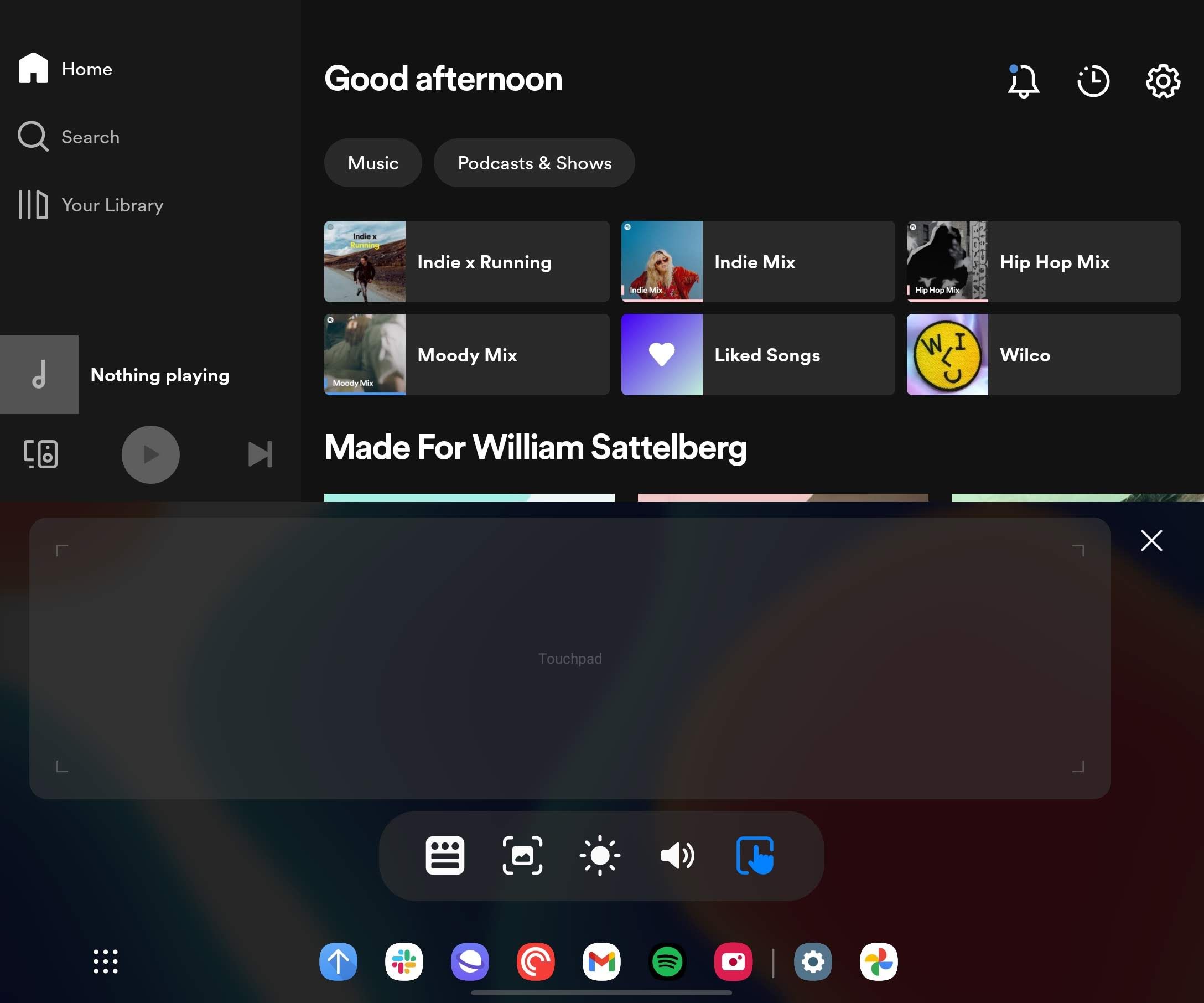
So what else does Flex mode offer? If you use media apps (think podcast players, music streaming services, or video subscription apps like Netflix), some of the controls at the bottom are useful. Using the Fold this way propped up the display for improved viewing, and the shortcuts for brightness and volume make your experience that much easier.
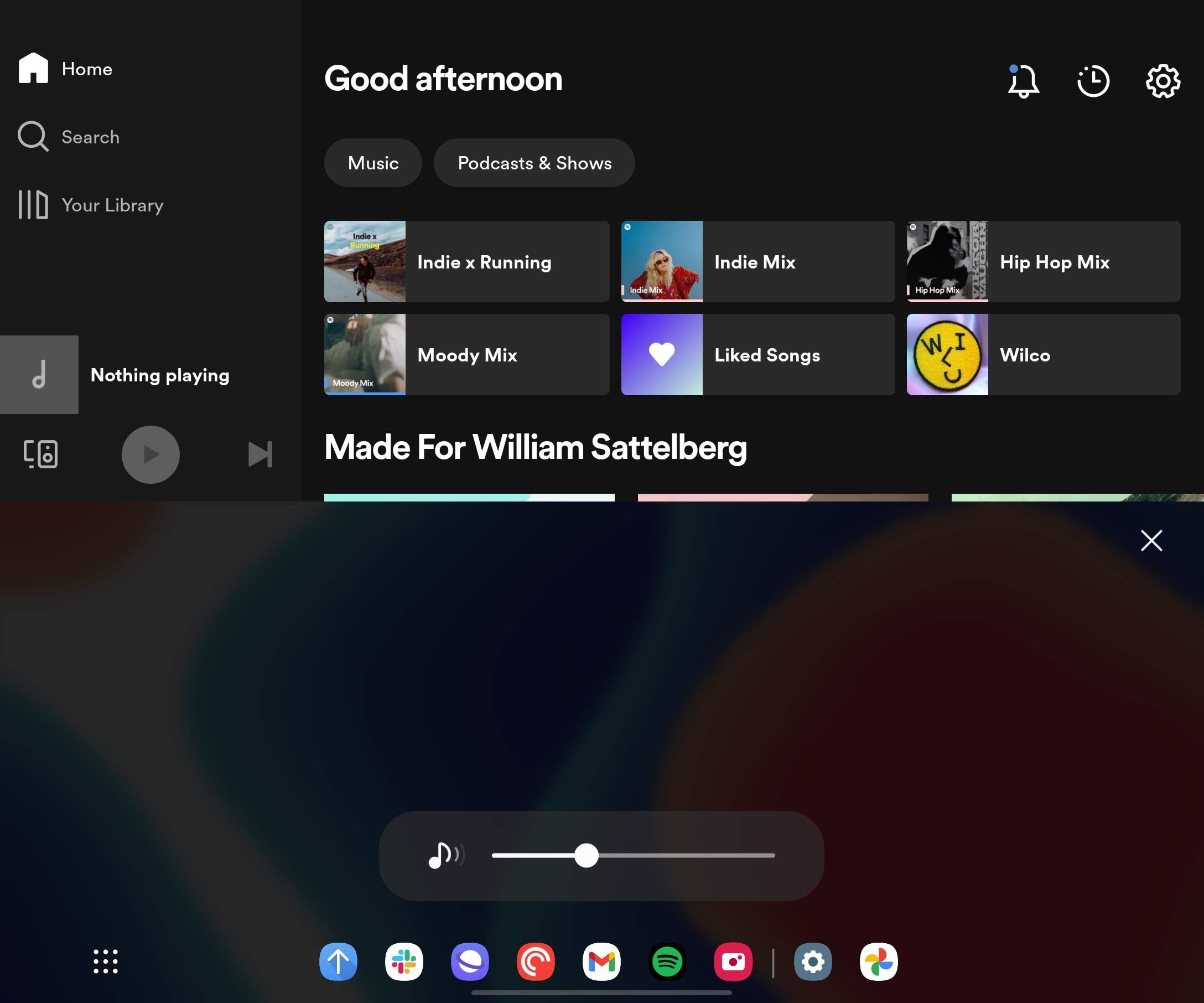
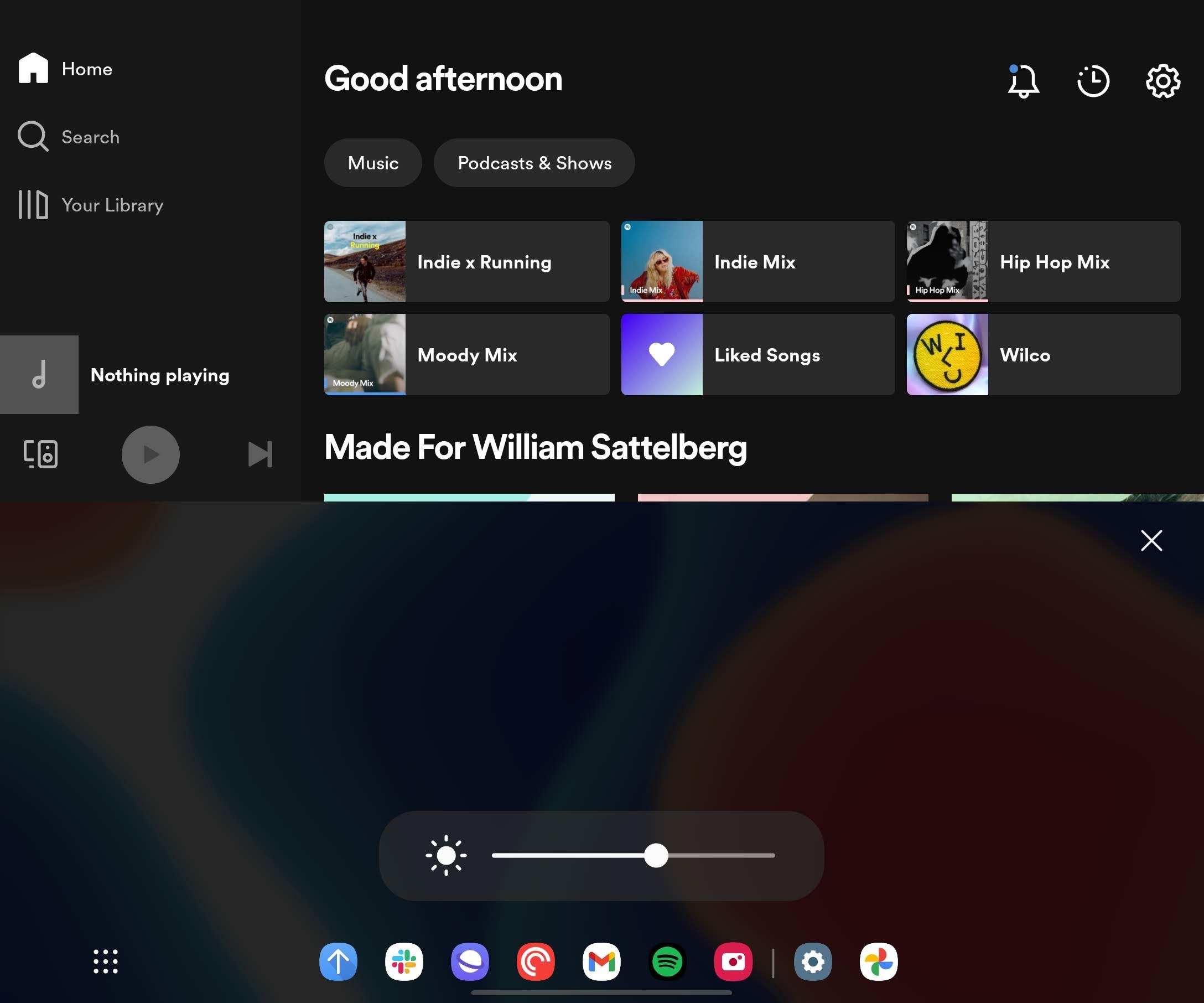
If you look at the Flex mode panel, you’ll notice two more icons. The leftmost box-shaped button opens your notification bar, saving you awkward paws on the top screen. It’s not the most functional of the bunch, but it’s nice to have. To the right of that is the final icon, a screenshot button that quickly captures what’s on your display. Remember that only what’s on top is saved, not the entire screen. You can still save everything, including the Flex Mode control panel, but you have to press the Galaxy Z Fold 4’s physical buttons, which can feel a bit awkward.
A screenshot showing the Flex mode shortcut.
Flex mode is one of the best ways to interact with your Galaxy Z Fold 4, especially when you’re trying to get real work done. Combined with an optional S Pen, Samsung’s latest foldable device is a multitasking device that you should take full advantage of as soon as you get your hands on the phone. And if you haven’t decided between the Z Fold 4 and the Galaxy S22 Ultra for your productivity needs, check out our comparison post before throwing away your credit card.
